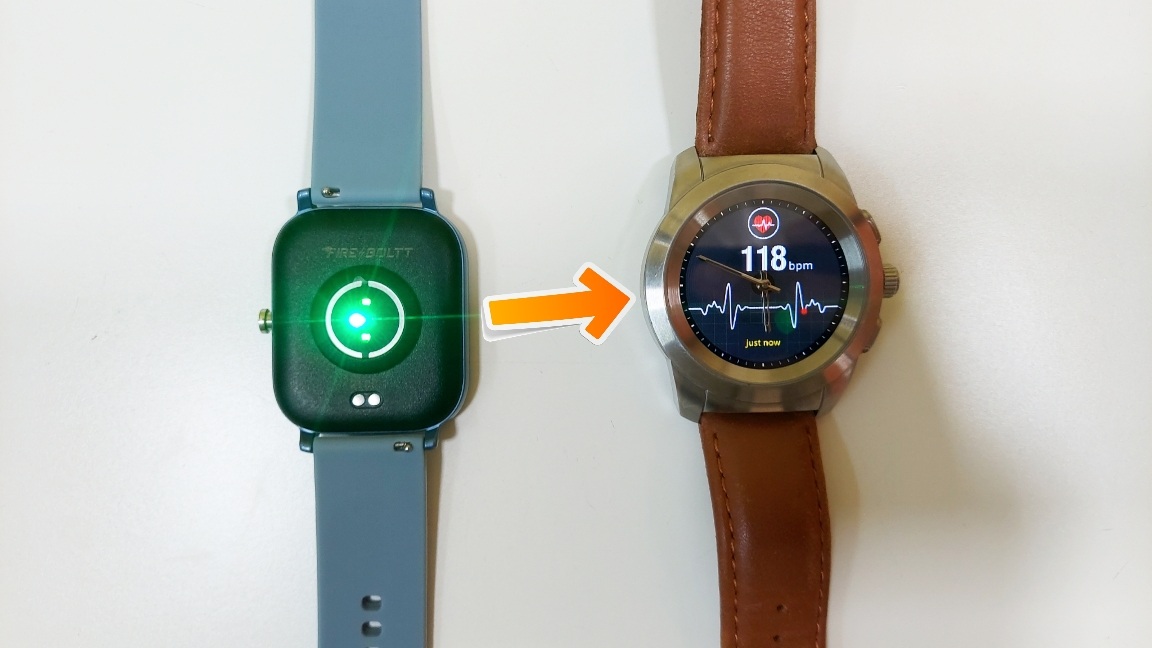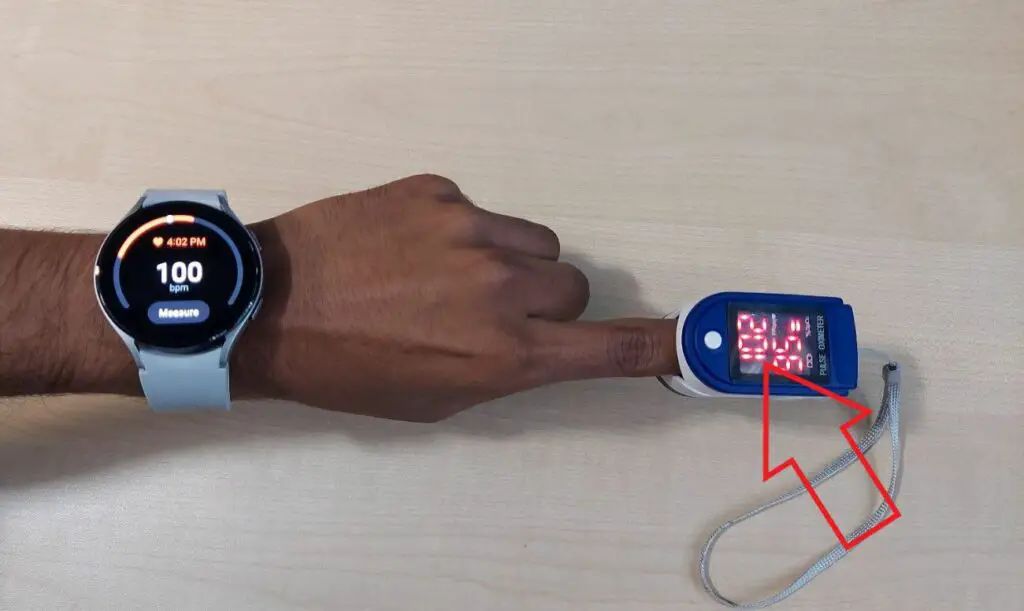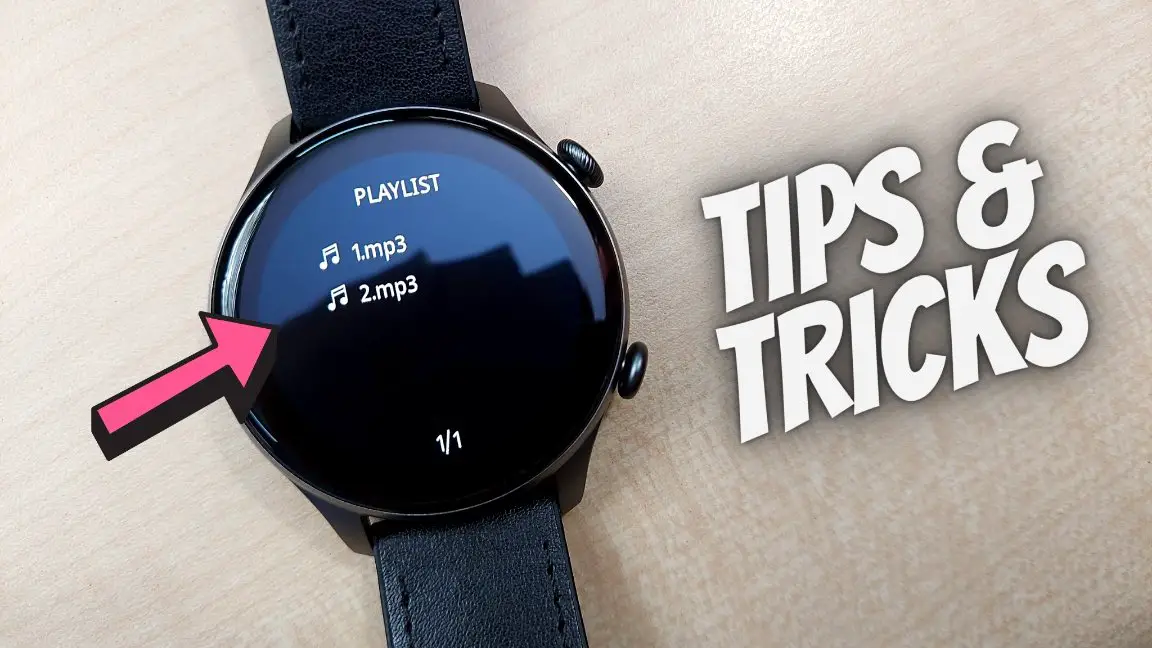People have now become more health-conscious and started relying on smartwatches and fitness bands to track their health data. Since you’re here, you may be using the heart rate sensor on your smartwatch to get your heart data. But how do these smartwatches or bands measure the heart rate? Are they accurate, and can you check their accuracy? Read on.

What is Heart Rate? Why is it Important?

Heart rate is the number of times your heart beats at a particular time. It is generally measured in beats per minute (BPM). One can check it on the wrist, side of the neck, top of the foot, and other body parts closely connected with the heart.
An adults’ normal resting heart rate ranges from 60 to 100 beats per minute. Measuring the heart rate helps find whether the heart is pumping enough blood.
One can use it to find the cause of abnormal symptoms like dizziness, chest pain, or shortness of breath. Measuring heart rate also helps track the intensity of your activities and workouts.
How Does a Smartwatch or Fitness Band Measures Heart Rate?

Till a few years back, Samsung used to give heart rate sensors on the back of Galaxy S-series smartphones. This was the beginning of heart rate monitors in mainstream gadgets, and it wasn’t that accurate.
Now, the technology has evolved, and almost all smartwatches and fitness bands, even in the budget category, offer heart rate sensors.
The current-gen smartwatches and fitness bands use optical-based photoplethysmography or PPG technology, which uses low-intensity infrared (IR) light to measure heartbeat.
It projects a green light on your wrist- blood absorbs the green light and reflects red light. When your heart beats, the blood flows in your wrist, and more green light is absorbed. But in between beats, the absorption is less. This change is used to detect blood flow and heartbeats.
The sensor at the back blinks the light hundreds of times a second at high brightness to calculate heart rates precisely. The process runs continuously on smartwatches or fitness bands to measure your real-time heart rate.
How Accurate is Heart Rate Sensor on Smartwatches? Check Accuracy

The PPG sensor that smartwatches and fitness bands use to measure heart rate is not as accurate as the ECG sensors on medical equipment.
For starters, ECG uses electrodes to measure cardiac muscular contradictions from the heart’s electrical activity, which gives highly accurate heart rate readings.
The PPG sensor on smartwatches cannot show accurate heart rate because it tracks the blood circulation of the heart on the wrist. On the contrary, ECG tracks it through the direct contradictions of the heart’s electrical activity.

According to JMIR, the Apple Watch measures HR with clinically acceptable accuracy during exercise. Similarly, watches from Fitbit and Samsung, too, give relatively accurate heart rate data. However, the accuracy isn’t that reliable on budget trackers.
Measure Accuracy of Heart Rate Sensor on a Smartwatch

The easiest way to check the heart rate accuracy of a smartwatch or fitness band is by using medical equipment like a Pulse Oximeter.
Measure the heart rate on your smartwatch while attaching a pulse oximeter to your index finger. Once they measure your heart rate, you can compare the results to check how accurate is the heart rate sensor.
If you have a budget fitness band or watch, you can compare it with an Apple, Samsung, or Fitbit watches with higher accuracy levels. One can use these watches as benchmarks to determine how accurate a fitness band or smartwatch is.
Why do Smartwatches or Bands Show Heart Rate even when not on Wrist?

At times, you may have noticed that watches show heart rate readings even when they’re not on the wrist, say placed on a table or strapped onto something else. Does it mean that watch shows false heart rate data? Not necessarily.
Folks at Wareable did an interesting experiment by wrapping watches around toilet rolls while measuring heart rate, wherein Galaxy Watch, Garmin Forerunner, and Fitbit Versa did not yield any data. In contrast, others ended up showing random readings.
The PPG technology on these watches looks for signals to detect the heart rate. But when it doesn’t find the signal from blood flow, it looks for the next closest thing to it, such as flickering in your room or light variation. This can produce false readings.
It all boils down to whether the watch has wear detection and can accurately detect if it’s on a wrist. But overall, all you need to worry about is the accuracy of the watch’s HR monitor when it’s on your wrist, not on a random object.
Should You Rely on Smartwatch or Fitness Band’s Heart Rate Monitor?

You can use the heart rate monitor on smartwatches and fitness bands for casual tracking while doing workouts or other activities. You can even rely on them for general health data.
However, you must always consult a doctor and prefer medical-grade equipment when it comes to medical usage. Heart-related issues can be very serious and must not be relied upon by these fitness trackers.
Premium watches like Apple Watch, Galaxy Watch, and options from Fitbit and Garmin will usually give you close-to-accurate heart rate readings. But again, it depends on person to person and how you use it.
Wrapping Up
This was all about how heart rate sensors work on smartwatches and fitness bands and whether they are accurate enough to be relied upon. I hope you found this article informative, and if yes, do share it with your friends and family too!
Related:


